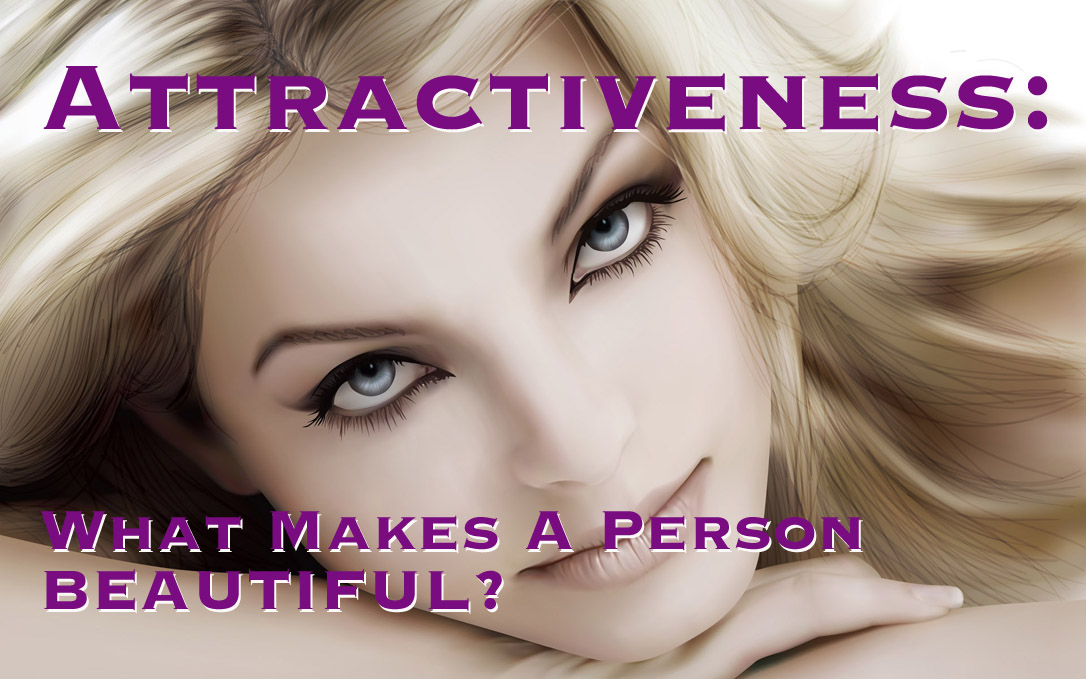

Attractiveness from a Female's Perspective
In one experiment, the researcher selected photographs of a man with what has been described as "feminine" features. These included a small nose, narrow chin and large eyes. This image was digitally morphed with an image of a very "masculine" face, with a strong jaw, big nose and small eyes. The two images were morphed in progressive steps in such a way that the viewer could adjust the degree of either masculine or feminine features with a slider, corresponding to which image the female subjects thought was most attractive. Subjects were also asked about their menstrual cycles to determine their potential fertility and estrogen levels.
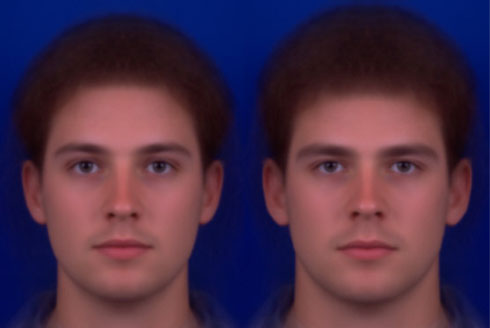
While most women preferred the middle range -- a combination of both feminine and masculine features -- subjects who were in their most fertile hormonal cycles preferred the more masculine image. The same women, when later tested during their infertile days, selected the more average looking male image as most attractive.
Scientists reason that fertility causes hormonal changes in the brain that seek out strong testosterone traits in their potential mates. These traits are usually associated with aggressive behavior, risk taking and verility -- traits that are advantageous in the act of procreation.
Some other interesting studies may be explained using this biological model. University of Aberdeen psychologist Ben Jones and his team tested the impact that the opinions of others has on our perception of beauty by giving women a test in which they had to choose the more attractive of pairs of male faces and to rate how much more handsome they found them. [The Proceedings of The Royal Society]
They were then shown a short video in which the same faces were displayed. But each face was being looked at by a woman smiling or one showing a bored or neutral expression.
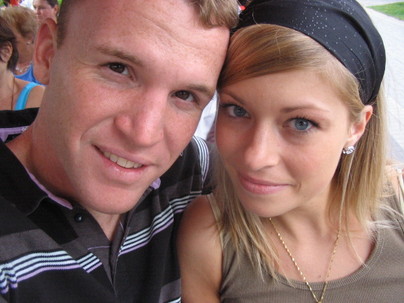 After watching the video, the researchers repeated the initial test.
After watching the video, the researchers repeated the initial test.
"We found that the slideshow caused women to become more attracted to the men who were being smiled at by other women," said Jones. This shows that people are using the attitudes of others to shape their own judgement about the attractiveness of some people.
In other words, a woman may not be sure how attractive a face is. But if other women show that they're attracted they dismiss their doubt. This may explain the "groupie" and the "cult of personality" phenomenon and why so many ugly men learn to play the guitar.
The test had the opposite effect on men. When they were asked to look at the same male faces, those who got the approving female glances were rated less attractive. Could this be jealosy?
When women are assessing a man's face for a marriage partner they usually react to a man with a wide smile, small eyes, a big nose and a large jaw. This is thought to indicate a strong testosterone level, a potentially good provider and protector for family life.
Studies show that younger women rely more on the physical attractiveness of a man than do older women. The latter incorporate such things as wealth, stability, power and faithfulness in their definition of attractive. This demonstrates wisdom since the most recent studies prove that less attractive men are more faithful and loving than handsome men.
Attractiveness from a male's perspective
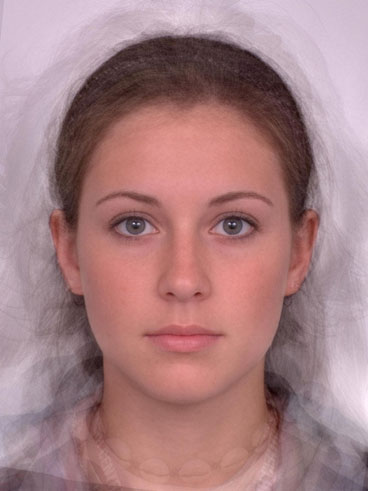 As might be expected, females tend to place less of their criteria for beauty on physical attractiveness than do males. This might be a lucky break for unattractive men! A recent study published in Psychological Science found that when seeking a date, men do not factor in their own attractiveness (or lack of) when assessing their chances of success with a beautiful woman. Sometimes they are lucky, but the study did find that, most of the time, people with similar levels of physical attractiveness usually end up dating each other and they aspire to date people who are slightly more attractive than themselves.
As might be expected, females tend to place less of their criteria for beauty on physical attractiveness than do males. This might be a lucky break for unattractive men! A recent study published in Psychological Science found that when seeking a date, men do not factor in their own attractiveness (or lack of) when assessing their chances of success with a beautiful woman. Sometimes they are lucky, but the study did find that, most of the time, people with similar levels of physical attractiveness usually end up dating each other and they aspire to date people who are slightly more attractive than themselves.
When reality sets in, less attractive people justify their less than beautiful partners by emphasizing their personality traits, like a sense of humor or kindness.
The ideal face of an attractive woman, according to experiments with men, has high cheek bones, big eyes and a thin jaw. From infancy to adulthood, our faces are growing at different rates and proportions, depending on such things as hormones. When viewing the proportions of elements such as nose size and facial proportions, males usually select features that are characteristic of a woman of 24.8 years -- perhaps also related to the perceived age of optimal fertility.
Some men prefer even younger proportions because these child-like faces stimulate emotions of caring and protection. These emotions seem to be more significant than sexual urges and procreation in some men. This can be in the psychological realm that dangerously approaches pathology and the law. Yet this "lolita" proclivity seems similarly hard wired.
Professor Victor Johnstone, of the University of New Mexico studied this phenomenon and reported that, "We found that that there definitely was a type of adult female face that men found attractive and that it was different from the average face," says Johnston. "The two key measurements are the distance from the eyes to the chin, which is shorter - in fact it is the length normally found in a girl aged eleven and a half; and the size of the lips, which are fatter -- the size normally found on a fourteen-year-old girl".
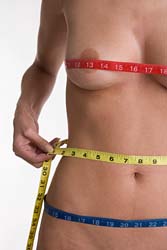 When it comes to body proportions, most men usually like big breasts and hips -- again possibly linked to the ability to bare and nurture offspring. Estrogen, the hormone associated with female fertility, encourages fat deposits around the buttocks and thighs. So full buttocks and a narrow waist send out the same message as the ideal face: "I'm full of estrogen and very fertile." Studies by Dr Devendra Singh from the University of Texas show the optimal preferred waist to hip ratio was 0.67 to 0.80, while a larger waist was viewed by males as meaning the woman was more faithful and kind and a woman with a smaller waist was judged as being more aggressive and ambitious.
When it comes to body proportions, most men usually like big breasts and hips -- again possibly linked to the ability to bare and nurture offspring. Estrogen, the hormone associated with female fertility, encourages fat deposits around the buttocks and thighs. So full buttocks and a narrow waist send out the same message as the ideal face: "I'm full of estrogen and very fertile." Studies by Dr Devendra Singh from the University of Texas show the optimal preferred waist to hip ratio was 0.67 to 0.80, while a larger waist was viewed by males as meaning the woman was more faithful and kind and a woman with a smaller waist was judged as being more aggressive and ambitious.
Dr Michael Cunningham of Elmhurst College, Illinois found that if a male is judging a female in an interview for a job, a woman with expressive eyebrows and dialated pupils has the edge and is likely to be considered more competent. The same features would not be judged as attractive if the same man was looking for a mate. Cunningham also found that attractive women with mature features, such as small eyes and a large nose, received more respect from men.
"Average" is beautiful -- not!
In the late 1870s, scientist and eugenicist Sir Francis Galton developed an image of the prototypical "face of crime" by creating composite photos of men convicted of serious offenses. Though Galton failed to discover anything abnormal in his composite criminal faces, he did find that the resulting visages were shockingly handsome. Later, Galton tried to make the case that a face with average proportions would always look more beautiful than a unique, individual face.
 Subsequent studies of both men and women had shown that averaging features seemed to make the faces more attractive than any specific face. When a collection of computer averaged faces and real female faces were submitted to a famous modeling agency for comments, 80% of the computer generated faces were selected as having potential to be a model. Scientists believed that average faces were more easy for the brain to recognize and require less analysis and processing in the fusiform. This ease of recognition was perceived as attractiveness.
Subsequent studies of both men and women had shown that averaging features seemed to make the faces more attractive than any specific face. When a collection of computer averaged faces and real female faces were submitted to a famous modeling agency for comments, 80% of the computer generated faces were selected as having potential to be a model. Scientists believed that average faces were more easy for the brain to recognize and require less analysis and processing in the fusiform. This ease of recognition was perceived as attractiveness.
But this theory has recently been disproved by Dr David Perrett, of the University of St Andrews, who found that individual faces were judged more attractive than the composites.
"We found that not only were individual attractive faces preferred to the composites, but that when we used the computer to exaggerate the composite features away from the average,that too was preferred," he said.
This would account for the popularity of actresses such as Brigitte Nielsen and Daryl Hannah [right], who have features that are far from average.
|
Attractiveness - a summary of facts
|
Psychologist David Perrett found that young men and women prefer faces that most resemble their mothers and fathers. Members of a close family also often share the interpretation of certain facial characteristics in judging someone's personality. Although this does not relate directly with beauty or attractiveness, it demonstrates that some aspects of evaluating facial characteristics may be learned.
My own take on this is that it's a matter of nature vs. nurture. Various centers of our hard wired brain, like the fusiform, compete to control our daily decisions. One center is concerned with mate selection based on physical traits. Others brain regions respond to a potential mate who is also intelligent, honest, faithful, kind and sane. Attractiveness, in the end, actually is unique to each individual. It should be said that, "beauty is in the eyes (plural) of the beholder." It's more a matter of left and right brain politics and somehow both hemispheres must work together to attract us to the perfect mate, as they usually do. Life is beautifully complex.
Facial Attraction: Choice Of Sexual Partner Shaped The Human Face
According to Science Daily, men with large jaws, flaring cheeks and large eyebrows are sexy, at least in the eyes of our ancestors, researchers at the Natural History Museum have discovered. Facial attractiveness played a major role in shaping human evolution, as studies on our fossil ancestors have shown our choice of sexual partner has shaped the human face.
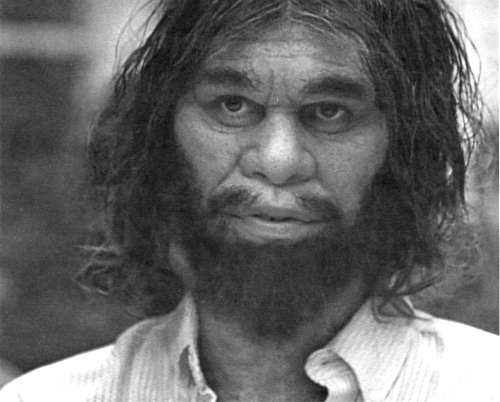
"I'm too sexy for my face..."
The face holds the secret to determining the sex of our ancestors and what makes us attractive to the opposite sex for reproduction.
According to palaeontologists at the Natural History Museum, men have evolved short faces between the brow and upper lip, which exaggerates the size of their jaw, the flare of their cheeks and their eyebrows. The shorter and broader male face has also evolved alongside and the canine teeth have shrunk, so men look less threatening to competitors, yet attractive to mates.
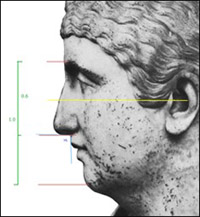 At puberty, the region between the mouth and eyebrows, known as upper facial height, develops differently in men and women. Unlike other facial features, however, this difference cannot be explained simply in terms of men being bigger than women. In spite of their larger size men have an upper face similar in height to a female face, but much broader. These differences can be found throughout human history. As a result, a simple ratio of measures could be used to calculate facial attractiveness in a biological and mathematical way.
At puberty, the region between the mouth and eyebrows, known as upper facial height, develops differently in men and women. Unlike other facial features, however, this difference cannot be explained simply in terms of men being bigger than women. In spite of their larger size men have an upper face similar in height to a female face, but much broader. These differences can be found throughout human history. As a result, a simple ratio of measures could be used to calculate facial attractiveness in a biological and mathematical way.
In fact, scientists have recently invented a computer program that can recognize attractiveness. See here.
Dr Eleanor Weston, palaeontologist at the Natural History Museum said, 'The evolution of facial appearance is central to understanding what makes men and women attractive to each other. We have found the distance between the lip and brow was probably immensely important to what made us attractive in the past, as it does now.'


I S
E V E R Y T H I N G
A friend of mine saw a feature on the news that amused him. He told me that, at five foot eight, he was considered "average" height for a man. He said that the story on the news stated that for every inch over the "average height," a male in the workplace could expect to earn an extra $600 each month. Considering that my friend was unemployed, he was happy to hear the good news and reported that he would immediately begin wearing elevated shoes. "Heck, until I find work, I am sure that I can live on $600 a month."
This bit of humor betrays a very real and serious problem that effects men and women in the workplace. It's a common problem, but one that is likely to be extremely difficult to eradicate.
Much public attention has been given to discrimination based on race, creed, color, national origin and age. But there is a form of discrimination that is still a taboo in the workplace. It is seldom ever addressed, yet it is perhaps the most obvious form of favoritism when it comes to job hiring, promotions and social acceptance -- both on the job and in society in general.
Consider the following:
Attractive people are 2-5 times more likely to be hired. Attractive people earn 12 to 16 percent more. Attractive people are 2 to 7 times more likely to date and make friends. Attractive people are significantly more likely to attain elected office. |
Consider the following:
Unattractive people are 2 to 6 times more likely to be laid off. Unattractive people are 2 to 5 times more likely to be convicted of a crime. Unattractive people are 2 to 3 times more likely to commit a crime. Unattractive people are significantly more likely to be abused as children. Unattractive people are extremely likely to be passed over for promotions. |
These and other startling facts are outlined in Steven M. Jeffes new book, Appearance Is Everything. In it, Jeffes takes a close look at some of the reasons behind appearance discrimination, citing tests and demographic surveys that prove his points with convincing and comprehensive data. In Jeffes book we learn that it is not enough to be "average" looking. In fact, in many instances this is just as bad as being "unattractive."
Much of the criteria that people use to judge another's health and abilities appears to be a combination of learned behavior and, as the ViewZone's "What Is Beauty" shows, innate preferences. Appearance Is Everything takes a look at the cover stories and features of popular magazines and shows how the themes of "beauty" are strongly reinforced as cultural facts. Jeffes also shows how our concepts of beauty have changed dramatically over the past 100 years, lending fuel to the evidence that culture and media are strong influential factors on what we "see" and what we infer about character from each other's appearance.
But hope springs eternal. Jeffes goes one step further. Several chapters in Appearance Is Everything are devoted to strategies that will help you compete in the world of the beautiful, even if you are not. Wearing certain clothes, using certain words and even walking with better posture can improve your chances of being perceived in a more positive light. With Jeffes 45 Appearance Rules you could get a better job or even score a date. But the real importance of his book lies in the revelations of our thin-skinned concept of beauty, which can be of value whether looking at yourself or at other people.
Steve Jeffes is currently gathering data in an attempt to seek a revision of the Civil Rights Act of 1964, to include laws against appearance discrimination. Appearance Is Everything is a "must read" for anyone who has experienced this form of injustice -- and really for everyone who has been exposed to this subtle but powerful form of prejudice.
Unattractive People Get Bullied At Work
As reported in ScienceDaily, It's common knowledge that high school can be a cruel environment where attractive students are considered "popular," and unattractive kids often get bullied. While that type of petty behavior is expected to vanish with adulthood, new research proves it does not.
The study by Timothy Judge, professor of management at the University of Notre Dame's Mendoza College of Business, and Brent Scott from Michigan State University is the first to link attractiveness to cruelty in the workplace.
In "Beauty, Personality, and Affect as Antecedents of Counterproductive Work Behavior Receipt," recently published in Human Performance, the researchers examine counterproductive work behavior and its effect on employees. They show that physical attractiveness plays as much of a role as personality in how a person is treated in the workplace.
The researchers surveyed 114 workers at a health care facility, asking them how often their co-workers treated them cruelly, including saying hurtful things, acting rudely and making fun of them. Through digital photos, the workers' "attractiveness" was then judged by others who didn't know them.
"Our research is novel because it focuses on how coworkers treat attractive and unattractive colleagues," says Judge, who specializes in management psychology, gender, leadership personality and career and life success. "We find that unattractive individuals are more likely the subject of rude, uncivil and even cruel treatment by their coworkers. And, not only do we, as a society, perceive attractive and unattractive coworkers differently, we act on those perceptions in ways that are hurtful."
Considerable research has been done in psychology, management and economics demonstrating that "beauty is good" for labor market outcomes, such as earnings, performance ratings and career success. Attractive people are more self-confident and have higher self-esteem and they are perceived as more intelligent and moral. Research even indicates that seeing attractive individuals puts us in a better mood.
"Given that physical attractiveness is not a bona fide occupational qualification for most jobs, our new findings are problematic for society," Judge says. "Worse, research reliably shows that we're more influenced by attractiveness than we are willing to admit."
It's a problem with no easy solution, especially given the increasingly visual nature of communication, according to Judge, who has written and been interviewed extensively about his gender, ambition and work stress research, among other studies.
"Awareness is surely one important step," Judge says. "If we recognize our biases and are more open and honest about their pervasiveness, we'll be in much better shape to combat the influence."